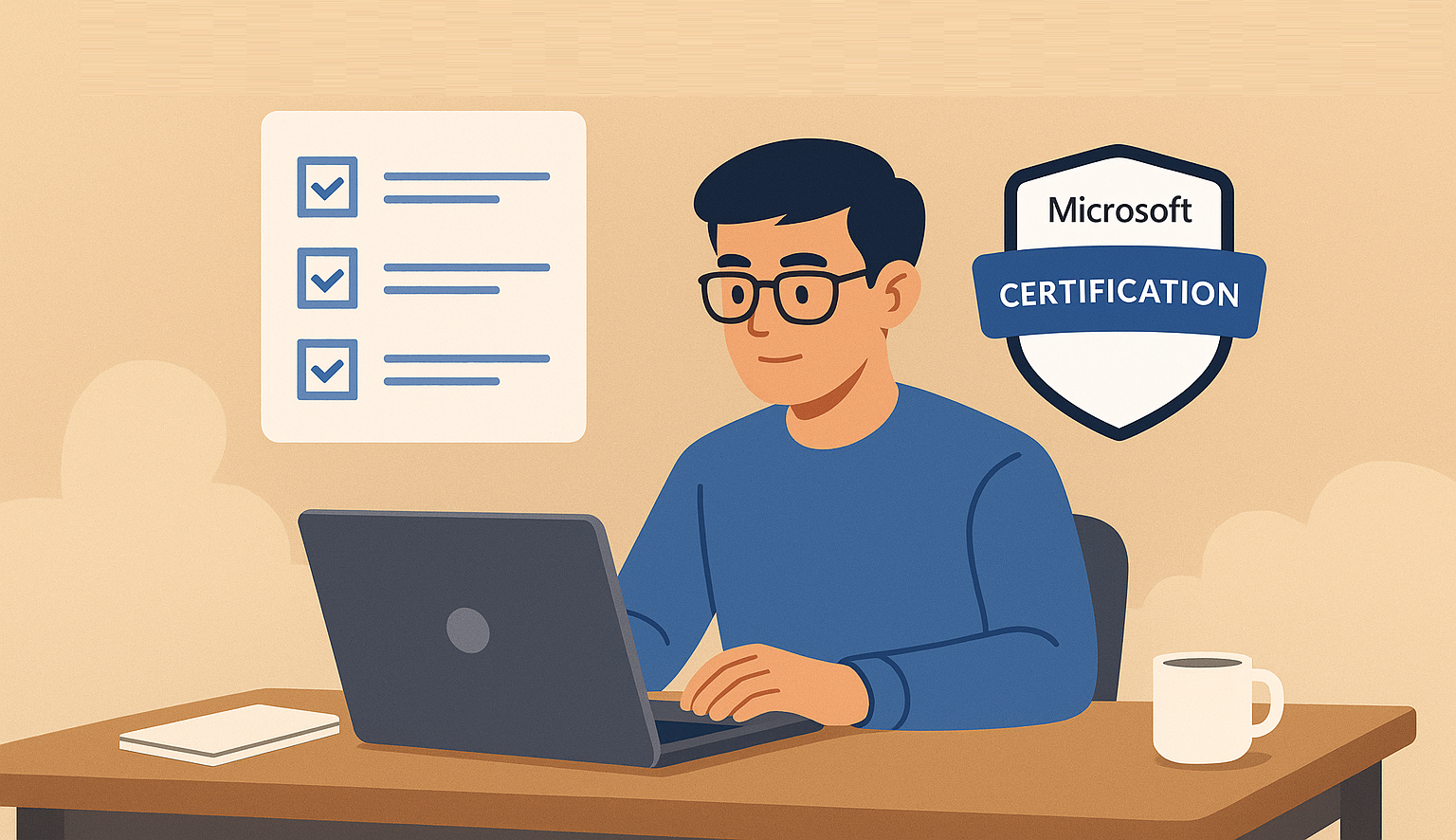Preparation and execution of Microsoft Certifications – How I do it

When it comes to Microsoft certifications, it’s not just about studying.
It’s about preparing the right way, using the right tools, and staying calm during the exam.
Over time, I’ve developed my own routine — and I’ll share exactly how I do it.
Preparation
1️. Use Microsoft Learn and the official documentation
Start with Microsoft Learn (e.g. AZ 204). The modules are well-structured, practical, and directly aligned with the certification paths.
I also go through the official documentation — it’s not always fun, but it’s gold when it comes to understanding the why behind the how.
2. Teach what you’ve learned — even if it’s to an object 😄
Explaining a concept to someone else forces you to really understand it.
If you don’t have someone to teach — no problem. Explain it to a wall, a plant, or even your coffee mug.
If you can clearly explain it, you’ve mastered it.
3. Hands-on labs, hands-on labs, and… more hands-on labs
Reading theory is great, but real understanding comes from doing.
Run your own labs. Break things. Fix them again.
In the end, the goal isn’t just to pass the exam — it’s to be able to apply what you’ve learned in real life.
4. Take a practice exam
You can find example tests on Microsoft Learn, or use measureup.com — I’ve had great experiences there.
They sometimes offer discounts, and their questions are very close to the real thing.
This helps you get a feel for timing, question style, and areas where you need more study.
Exam execution
I prefer taking my exams at home.
It gives me more flexibility — I can schedule them late at night (around 10 PM), or super early (3 AM for the party people 😅).
You’ll need:
- A quiet room where no one can disturb you
- Only one monitor open
- A camera and a microphone
- A clean desk (e.g. no paper, pens, ...)
Before starting, you’ll go through a check-in process:
You’ll take photos of your workspace from different angles, show your ID, and verify your identity.
You can start the check-in up to 30 minutes before your scheduled time.
For example, if your exam starts at 14:00, begin the check-in at 13:30.
Once you get used to it, the whole process is quick.
If I remember correctly, you also have up to 20 minutes after your scheduled time to start check-in if something goes wrong.
During the Exam
Microsoft exams usually include different sections — multiple-choice, use cases, and sometimes drag & drop or scenario-based questions.
Here’s my approach:
1. Go through the multiple-choice questions quickly.
Mark the ones you’re unsure about.
You can come back to them later — and sometimes other questions help you remember or hint at the right answer.
2. Read the question carefully.
If it says “Select two options,” make sure you select exactly two.
Small details matter.
3. Use Microsoft Learn efficiently.
Some exams let you access documentation. Learn how to navigate Microsoft Learn quickly — for example, searching for “Azure Function scaling” or “App Service authentication.”
It’s not always perfect, but with a bit of practice, you can save time and even earn extra points by finding the right info fast.
My key learning: failure is an essential step in the process of success
I’ve failed several exams — and that’s okay.
Everyone does at some point.
You don’t become better by succeeding on the first try;
you become better by trying again and learning from your mistakes.
Failure isn’t the opposite of success — it’s part of it.
